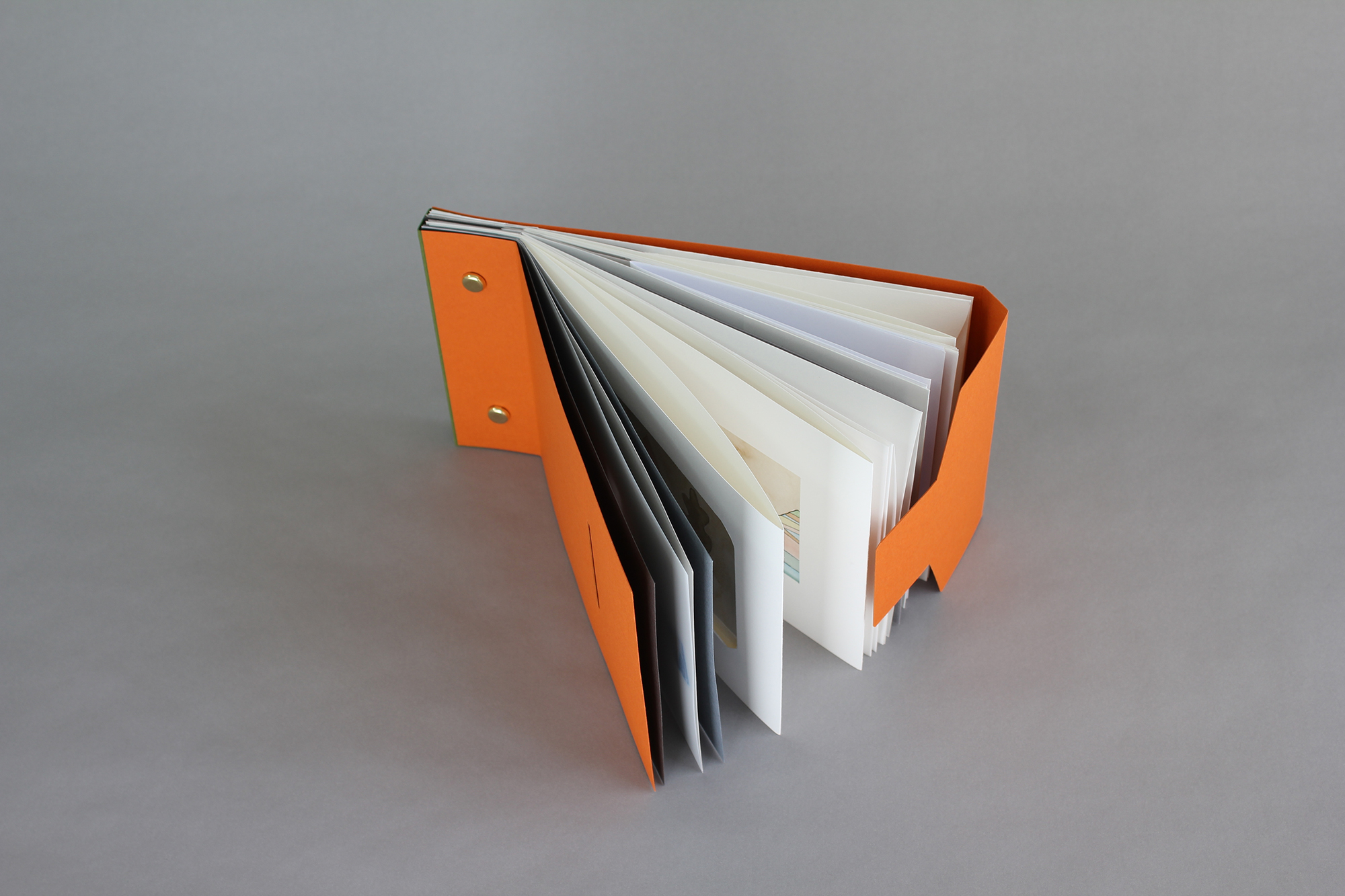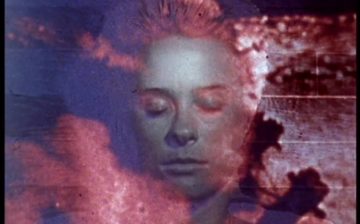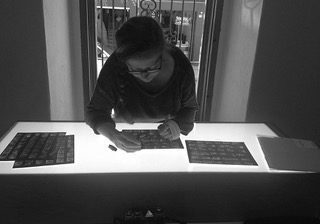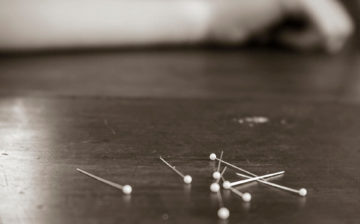Workshops
Create a collection of inventive page structures suitable for use in a variety of bindings.
There are no available registration dates at this time.
NOTE: This class will be held in a live, online format using the Zoom Platform.
Class meets Saturday & Sunday 10am-1pm and 2pm-5pm ET

Create a collection of inventive page structures suitable for use in a variety of bindings. Making a book by hand allows opportunities for creativity in the design and material choices of the book. And it’s the details of these choices that can elevate your book from the commonplace to set apart from the crowd.
Binder-artists often have ideas that challenge the successful execution of traditional binding forms, because of unusual materials or unconventional alterations of these structures. This workshop offers some approaches to designing pages that go beyond the regular printed page, but are easily bound into traditional forms.
We’ll cover a range of techniques, with many based on historic structures, including how to incorporate photos or prints, oversized pages, loose material, as well as pockets, foldouts, envelopes, mounting options, and other display possibilities. We’ll also discuss the relationship between the reader-viewer and the design of the physical book as we work through these variations.
Each participant will make a simple but useful book model to hold their page examples for future reference like the one pictured here. Previous bookmaking experience is helpful.
Tools and materials:
Supplied by MMW+C in Kits – Mailed the week before class
(1) 3 x 5 ½” horizontal postcard, print, drawing or photo
(1) 3 ½”x 5 ½” horizontal postcard, print, drawing, or photo
(2) 3” x 3” postcards, prints, drawings or photos
6’ bookbinding thread, linen 18/3, button and carpet thread, perle cotton #5 (or similar)
2 pieces of Mylar, 5” x 7” or something similar (acetate, rigid plastic from a report cover, etc.)
2 Brads or paper fasteners, ¾”-1” long post and top diameter about 3/8” wide (or a bit larger okay)
(2) 8.5 x 11 Translucent paper: tracing paper, thin Denril, glassine, etc.
(16) sheets of 11 x 17 textweight paper, like Mohawk Superfine 80 Text, drawing, copy or equivalent
(1) map 14 x 15 on textweight or light drawing paper (You can draw your own map if you wish!)
Scrap 4-ply mat or binder’s board: 8 x 10 piece is enough. Cut into (1) 3”x3” piece and (1) 6” x 1.5” piece.
Scrap papers: 20 strips 5” x 1.25” cut from these scraps.
Materials you will need to supply:
(2) Binder Clips
Double-sided tape, ¼” wide and with a backing if possible (like 3M #415), need about 2 feet
Glue stick
Paper:
A list of specific cutting instructions for the paper used for pages will be sent prior to the class, so students can cut those pages before the first session. The papers needed are listed below. Some extra is accounted for in case of mistakes in cutting and/or folding. Cutting can be done with a straight edge and an X-Acto knife or with a papercutter.
For the cover:
- 1 or 2 sheets of a heavier weight art or printmaking paper that folds well without cracking, at least 15 x 15 inches in size. Some 140 lb/300gsm papers might work for this OR you can use some of the Canson MiTientes from the interior pages. We will cut this in class.
For pages:
(6) sheets 19 x 25 Canson MiTientes (98 lb/160gsm) A few (3) harmonious colors, or use all the same.
Ruler, 12 and 18”-24” metal
X-Acto knife
Cutting mat
Bone folder
¼” hole punch
Awl or piercing tool
Bookbinding sewing needle, of the size to fit thread (eye shouldn’t be too big, just a little bit larger than the shaft of the needle)
Pencil and scrap paper
Right triangle
Compass
Share This

Instructor: Stephanie Wolff
Stephanie Wolff works with paper, text, textile, and the book form, with projects that explore themes of weather, history, and rural life, among other topics. Her artist books are held in many public and private collections, and have been exhibited in the United States and Germany. Her works are included in 500 Handmade Books, Volumes 1 & 2 (Lark Books). She has been awarded fellowship/residencies, including from the American Antiquarian Society and the Jaffe Center for Book Arts. Stephanie’s years as a book conservator at the Dartmouth College Library provided her with experience in the care and repair of a wide range of library materials, from books and manuscripts to maps, scrapbooks, and other objects. This conservation work included the creation of housing for display and storage of rare and fragile items. Her early experience in pre-digital photography—combined with a background in book arts, binding, and conservation—gives her a rich knowledge base with a range of possibilities for designs, including those that combine book forms with photographic or printed images. As a longtime teacher of book arts to college students and others, she enjoys sharing her knowledge from bookbinding, book conservation, and fine arts to help people transform their ideas into tangible creations.




